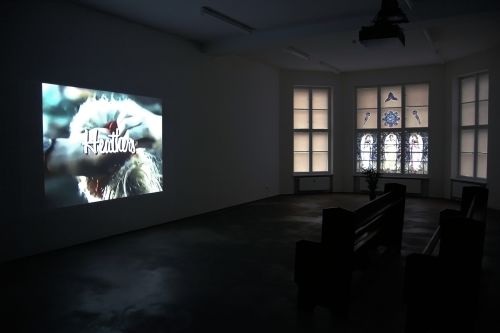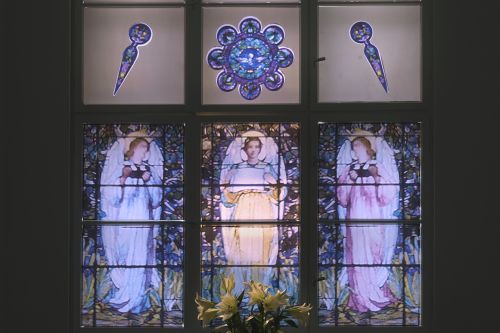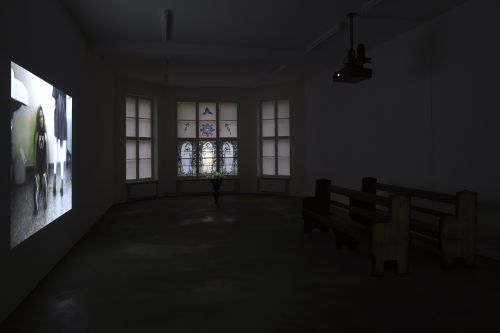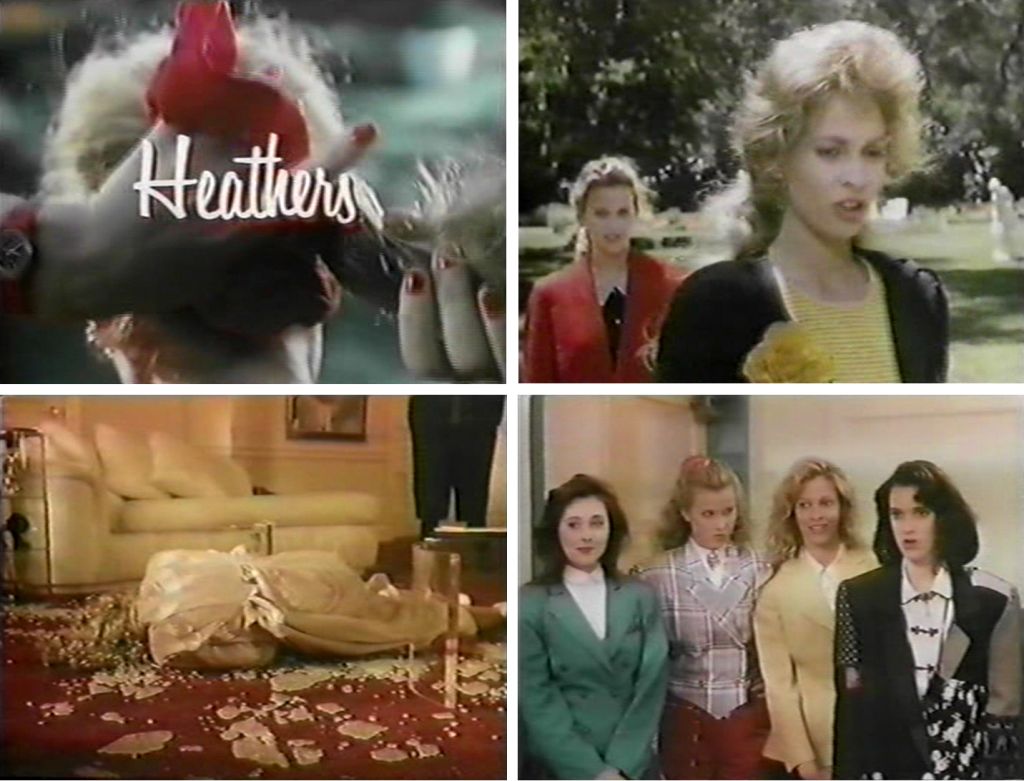As an acid dramatization of the social and sexual confusions of adolescence and young adulthood, the original ‘Heathers’ chimes with Karen Kilimnik’s fascination with the uncanny nature of white American mainstream society, trash culture and the emotional, fragile world of teenagers. Kilimnik’s artistic remix of the original is directly filmed off a television monitor, and extends the original three hour long dark comedy into a six hour tour-de-force artwork by slowing down, freeze framing, fast forwarding, rewinding and repeating individual scenes.
Like Kilimnik’s painting practice, ‘Heathers’ reveals an ambiguous attitude towards the clichéd woman of American mass media, an attitude that sits intriguingly between fetishisation and critique. By breaking up the narrative structure of the film into separate scenes, Kilimnik shifts the viewer’s attention away from the storyline towards a non-linear constellation of key moments, including the opening scene and its famous quote, “What’s your damage, Heather?“ The fragmentation of narrative also places more focus on the female stars, invoking a critical tradition which identifies the representation of female sexuality in classical Hollywood film as constructed around the still image, the pause or pose, which invites the spectator to contemplate woman as a visual spectacle.
‘Heathers’ locates Kilimnik not only in a particular kind of feminist tradition, but also within a specific generation of artists’ film and video makers. Kilimnik, like other mid-1990s artists, was fascinated by the advent of digital technology and the way it exposed the limits and the unique qualities of celluloid film and its aesthetics. For Kilimnik, DVD and video technology are based on spectatorship, because they offer the possibility of scene selection, freeze frame, slow motion and other tools which push the spectator out of the ‘passive’ cinema seat into a position of play and control.
By extracting short film sequences from the linear narrative of the film, and by repeating them over and over again, Kilimnik exemplifies the concept of the so-called ‘possessive spectator’ of the digital age, whose desire to interrogate, possess and hold the elusive image generates a new form of repetition.
‘Heathers’ is viewed in a chapel-like room, a context which deliberately alludes to the funeral scene in the film. The sacred and reverential atmosphere of the installation environment, with screen as altar, also subtly and humorously points towards the worship of the Hollywood idol that so fascinates Kilimnik. This sense of kitsch morbidity has long been central to her artistic practice.















